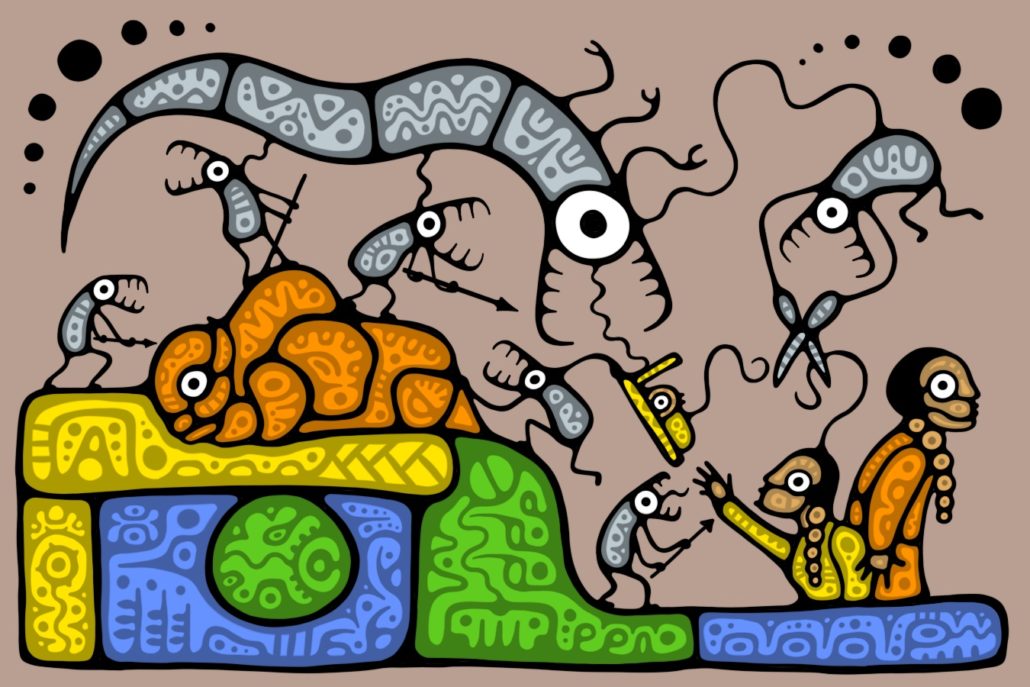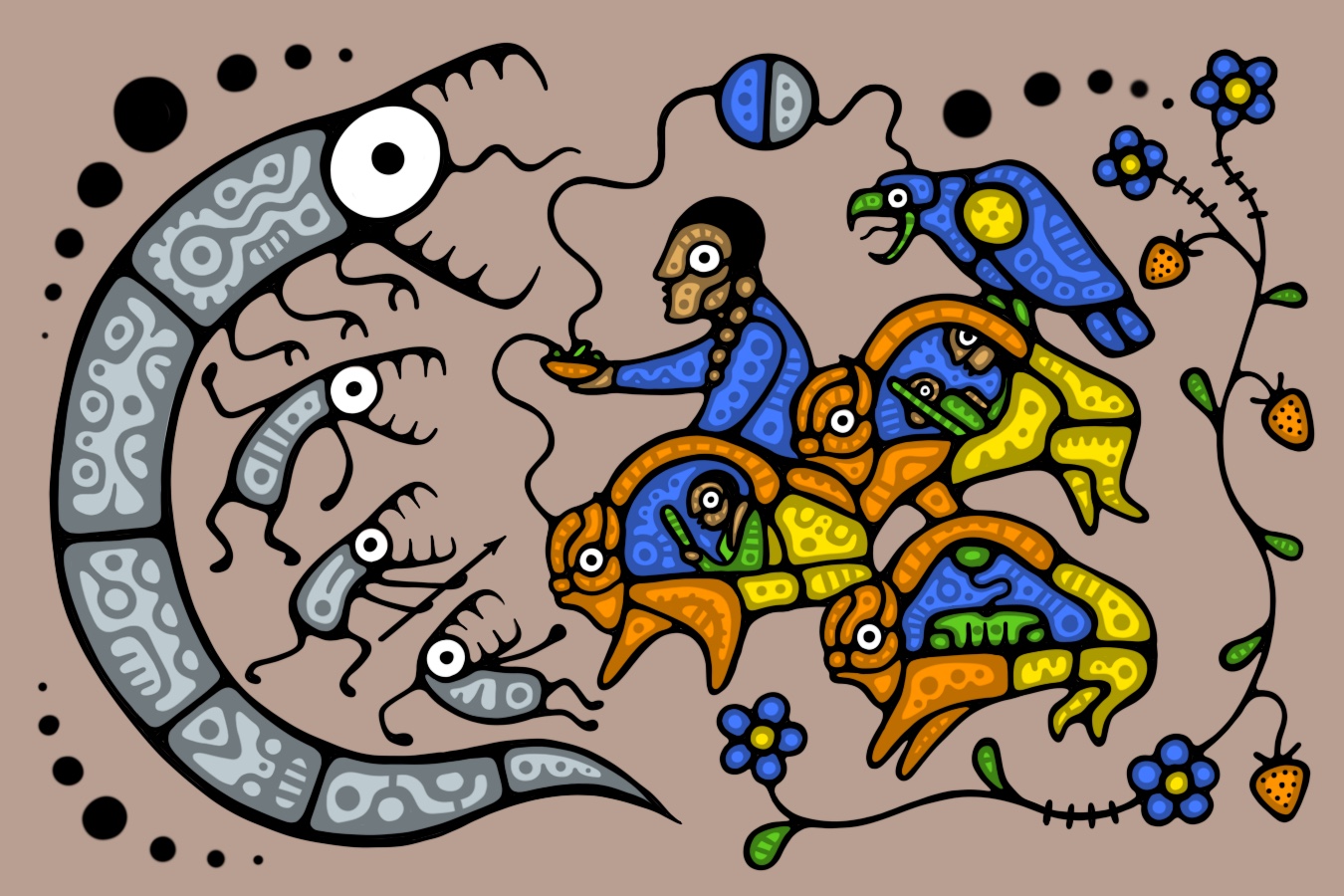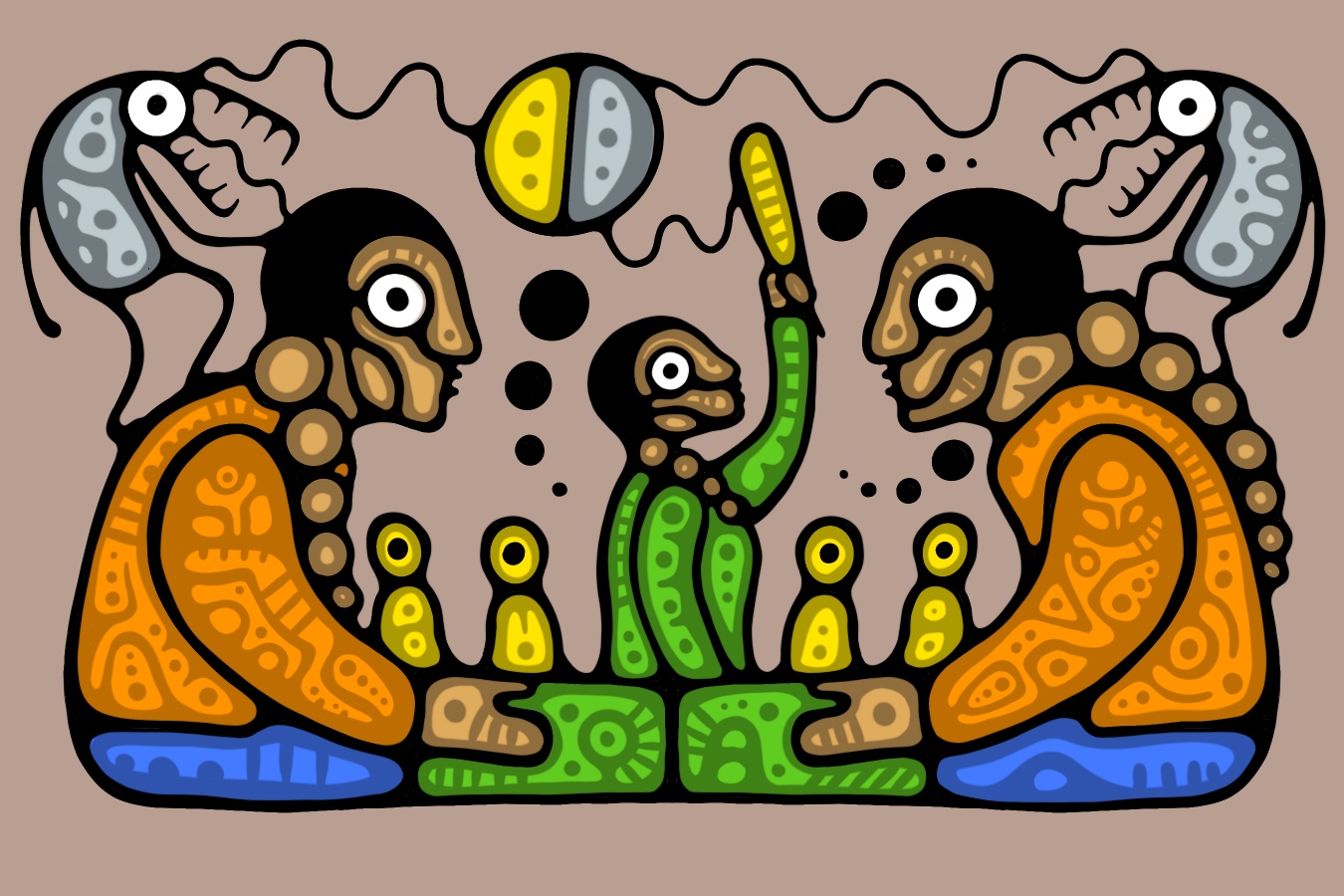
Breaking the cycle of trauma has Indigenous peoples in Canada working through more than 150 years of hurt
When Christy Morgan was a teen, she experienced a lot of frustration and self-doubt. When you grow up exposed to alcoholism, drug use and, occasionally, violence, it is not an easy existence. “It wasn’t until I was older that I even realized that [these destructive behaviours] weren’t the norm,” she says.
Thankfully, when she started acting out, her parents got what was going on. “My mom had the insight to get me the help I needed, and both of my parents supported me with love,” Morgan says. “They let me vent instead of holding it in and being self-destructive. They told my sister and me that what had happened was not because of anything we did.”
Morgan’s father is from the Bonaparte Band, part of the Secwepemc (Shuswap) Nation in B.C. As children, he, his siblings and both his parents were forcibly removed from their families and placed in residential schools, as per government policy. In those state-and-church-run institutions, Indigenous children were intentionally stripped of their cultural identity, and physical, emotional and sexual abuse were rife.
Morgan didn’t learn in school about the historical trauma of colonialism that her community was enduring, or why generation after generation of her family have suffered as a result. “As a kid and teenager, I tried to understand what was not okay in my family and why it was happening,” she says. “But it didn’t make sense.”
But then she began learning the truth about her family’s and community’s past hardships. “Now, I know our shared Canadian history and the root causes of our trauma,” she says. “But as a community, we’re still trying to understand the impacts from the last 150 years of intergenerational trauma.”
What is intergenerational trauma?
We can pass along many things to our children, among them our genes, values and heirlooms. But what many people don’t realize is we can also pass on our trauma. Intergenerational (or transgenerational) trauma can show up in younger members of families whose parents or grandparents experienced traumatic events such as war, persecution, sexual abuse or violence.
When those who lived through the original trauma have not had a chance to heal from it, their children and grandchildren may also feel the effects of the trauma—even though they didn’t experience it firsthand. Survivors often transmit trauma to later generations when they don’t recognize it or have the opportunity to engage in a healing process—or, of course, if the magnitude of their trauma is simply too overwhelming. Over time, destructive behaviours and mental states can become normalized, leading to future generations suffering. Their pain might manifest in addictions, mental and physical illness and destructive behaviours long after the initial trauma took place.

How does intergenerational trauma affect communities?
Intergenerational trauma doesn’t just affect individuals—it can impact a whole group or community, too. In this case, the definition of intergenerational trauma refers to collective complex traumas inflicted on people who share a specific identity or affiliation. That might mean their ethnicity, nationality or religion. Recent chapters in history such as the Holocaust in Europe and the transatlantic slave trade have shown that intergenerational trauma can devastate whole communities across decades and even centuries.
Intergenerational trauma involves what happened in the past, but also what’s happening in the present and what will continue to happen in the future. A legacy of trauma forms in which a community continues to experience distress over generations, despite many members of the community never having experienced the original trauma.
“I see the impact of intergenerational trauma reflected in people’s lives through addiction and homelessness,” says Harvey Manning, director of programs and services at Anishnawbe Health Toronto, noting that 50 percent of people using injection sites are Indigenous, as well as 16 percent of people in Toronto experiencing homelessness – though they account for just 2 percent of the population. “The housing crisis in the GTA is especially challenging for someone experiencing intergenerational trauma,” he adds. “If you can’t afford a place when you’re suffering, it’s not going to help how you feel about yourself.”
How does intergenerational trauma affect Indigenous peoples in Canada?
Colonialism has caused deep intergenerational trauma among Indigenous peoples across the globe. In Canada, it first came in the form of land dispossessions and assimilative policies and practices, including the residential school system and, later, the Sixties Scoop and the Millennial Scoop, in which Indigenous children have been removed from their families in disproportionate numbers to be adopted or to grow up in the child welfare system, outside of their communities.
The disappearance and murder of thousands of Indigenous women, girls and 2SLGBTQQIA (two-spirit, lesbian, gay, bisexual, transgendered, queer, questioning, intersex and asexual) people across a number of decades is another devastating occurrence that perpetuates the cycle of intergenerational trauma, as are recent disputes over land rights, such as the RCMP entering the unceded territory of the Wet’suwet’en Nation in February 2020 to arrest members of anti-pipeline camps.
We’re still only uncovering the myriad ways intergenerational trauma can manifest. Historical trauma coupled with ongoing present-day traumas such as anti-Indigenous racism and a lack of clean drinking water has had a massive negative impact on Indigenous communities, resulting in (and combining with) issues such as addiction, limited education, incarceration, violence, abuse, suicidality, homelessness and poverty. These symptoms are what many social agencies and service providers focus on addressing. But without considering root causes, one of which is intergenerational trauma, conventional solutions and treatments simply won’t work.
How does intergenerational trauma affect mental and physical health?
Animal studies show that trauma may leave a chemical mark on DNA, which then is passed down to subsequent generations. The mark doesn’t directly mutate the gene; rather, it alters how the gene is expressed. This phenomenon is known as epigenetics, but so far, the science is too new to prove if humans actually carry any biological trace of our forebears’ pain.
What has been proven is that the psychological remnants of trauma can be transmitted in humans. Not surprisingly, the burden of carrying a trauma you didn’t experience and may not even understand can cause intense emotional suffering and feelings of helplessness.
One example? It turns out that members of First Nations communities with a parent who attended residential school “report higher levels of psychological distress and suicidal thoughts” than those without that family history, according to a 2017 study by Dr. Amy Bombay, an Ojibway (Rainy River First Nations) researcher at Dalhousie University, and scientist Dr. Robyn McQuaid at the University of Ottawa Institute of Mental Health Research.
“Our findings consistently show that the disproportionate number of health and wellness issues Indigenous peoples in Canada experience are linked to the traumas they or their parents or grandparents have endured,” says McQuaid. This link between past trauma and current issues helps explain health disparities in Indigenous communities and how to address them.
Why do so many non-Indigenous people say, ‘Just get over it!’?
Awareness of the scope of intergenerational trauma in Indigenous communities remains low because the Indigenous experience has largely been excluded from mainstream history narratives. Even many Indigenous people are unaware of the extreme challenges their ancestors faced.
According to the Truth and Reconciliation Commission’s (TRC) final report from 2015, too many Canadians know little or nothing about the history of colonization of Indigenous peoples in Canada. This lack of historical knowledge has serious consequences for Indigenous peoples, and for Canada as a whole. It results in poor public policy decisions, reinforces racist attitudes and fuels distrust between Indigenous peoples and other Canadians.
It is crucial to acknowledge the harms done to Indigenous peoples in Canada and to understand how the cumulative effects of intergenerational trauma continue to impact the cultural, social and economic realities of many Indigenous people today. And there’s no excuse for expecting Indigenous people to do the emotional labour of explaining this to others.
“We’re talking about the accumulation of traumas,” says Morgan, who is now the director of Indigenous initiatives at the Trellis Society (formerly Boys & Girls Club of Calgary). “We see the lingering effects—things like alcoholism and drugs—but until we get to the why or what happened, even we can’t articulate the trauma,” she says. “Trauma is not unique to Indigenous people. The difference is, we haven’t been given the time or space to heal. We’re expected to get over it and educate everyone else about it.”
How can Canada’s education system do better?
One key call to action in the TRC report is that Canadian schools should teach all students about residential schools, treaties and the lives of Indigenous peoples. “Much of the current state of troubled relations between Aboriginal and non-Aboriginal Canadians is attributable to educational institutions and what they have taught, or failed to teach, over many generations,” the report reads. “Education must remedy the gaps in historical knowledge that perpetuate ignorance and racism.”
Since the release of this report, all provinces and territories now include the history of residential schools in their curriculum, but the lessons taught are still neither mandatory nor extensive. The process of including Indigenous history and perspectives into schools has been slow, with much work still to be done.

What can stop the cycle of intergenerational trauma?
“If trauma can be passed down across generations, so too can resiliency, and this is so important to focus on,” says McQuaid. “Intergenerational resiliency breaks the cycle and can be seen through the many resilient Indigenous youth in Canada.”
McQuaid also points to some of the inherent strengths of Indigenous communities, such as connection to the land, to culture and to traditional ways of knowing, which are all essential in healing.
Effective programs to address intergenerational trauma draw on the power of resiliency and connecting with Indigenous culture.
Morgan’s ongoing personal healing journey, for instance, “has been filled with learning about our shared Canadian history, asking questions and sitting with Elders, going to ceremony and surrounding myself with others who are on their journey of well–being.”
One aspect of that journey meant returning to the community she grew up in and reconnecting with her roots. “I’ve been humbled to come across knowledge keepers willing to share and to love me in my journey,” she says. “That’s how our communities are meant to work. The knowledge our Elders hold is meant to be shared. Once I understood our shared history, I could name things that impacted my family and how I could play a role in changing it. It sparked my passion for social work. I learned to set aside the shame and to find ways to ask, ‘What happened to you?’ and not, ‘What’s wrong with you?’”
What do Indigenous youth need?
Morgan’s journey has equipped her to lead the Boys & Girls Clubs of Calgary’s Iiyika’kimaat program to help Indigenous youth heal from inherited traumas. And this work is vital: Statistics Canada reports that the suicide rate among Indigenous people in Canada was three times higher than in non-Indigenous populations between 2011 and 2016. The highest rates were among First Nations men and Inuit men and women aged 15 to 24 years old.
“The Iiyika’kimaat program provides support with making healthy and positive life choices while addressing a person’s intergenerational trauma,” says Morgan. Iiyika’kimaat encourages young people to develop a sense of identity and belonging by incorporating ceremony with Elders, so they can engage regularly with spiritual and cultural teachings. They come together for activities such as monthly family dinners, smudging, storytelling with Indigenous authors, art therapy and discussions around everything from traditional cultural roles to courage to creation stories—along with typical teenage fun like going to the movies.
“To see our young people thrive when they get the space they need, where it’s okay to be an Indigenous person… when a young person who is so disenfranchised from who they are comes up to you with such pride to be given their traditional name and speak their traditional language—that’s intangible,” says Morgan.

How can families heal from intergenerational trauma?
When Indigenous children were removed from their homes in the residential school era, they were also denied any knowledge of how to exist as a family. The resulting deficit in parenting skills, compounded by the loss of traditional Indigenous child-rearing practices, is yet another legacy of residential schools. And institutional suspicion around Indigenous parenting skills persists. While residential schools have closed, Canada’s child-welfare system continues to apprehend Indigenous children at alarming rates. More than half of the children under 14 in foster care in Canada are First Nations, Inuit or Métis, even though only 7.7 percent of all children under 14 in our country are Indigenous.
Creating a healing space for Indigenous families is vital in the regeneration of a healthy community. Knowing the history of Indigenous peoples in Canada helps individuals understand the legacy of trauma, and cultural teachings help them work through it.
For example, the Braiding the Sweetgrass program offered by Calgary’s Hull Services focuses on helping Indigenous families heal and on preventing the transmission of trauma. Families learn (or re-learn) traditional cultural teachings directly from Elders to combat the shame about and denunciation of Indigenous culture that was institutionalized at residential schools. Parents get support in dealing with their own issues so that they can support their children with theirs.
“We can be intentional about interrupting the cycle of trauma instead of just treating the symptoms,” says Kathleen Hagan, Hull’s program director. “We help participants let go of the shame; to understand that what they were told was not true; and give them the knowledge that they can reclaim their identity. You can see it happen, and it’s beautiful.”
How can non-Indigenous people support the healing process?
“So many people are still struggling to have healthy conversations in our own communities and figure out how to heal while also trying to educate non-Indigenous folks to understand our plight,” says Morgan. “It’s a heavy burden.”
She recommends that every Canadian read the Truth and Reconciliation Commission of Canada (TRC) report to understand why it was warranted in the first place. “Then take that knowledge and do something,” she suggests. “Think about who you elect. Having our allies voice that we need change really helps. It’s not just about reconciliation, but challenging any kind of oppression and racism. Find the courage to say that’s not okay at your own dinner table.”
Actively getting to know Indigenous people by attending events and supporting their businesses helps build understanding and cultural respect, too. For instance, Morgan suggests attending Indigenous cultural events in your community, such as Indigenous Awareness Week. “That’s an easy and fun way to engage,” she says. “There’s a lot of great stuff happening in our communities that we want to share and celebrate.”
Hand in hand with truth and reconciliation, the work of healing intergenerational trauma is a sensitive, gradual and arduous process. Undoing decades—even centuries—of suffering doesn’t happen overnight. “It’s not magic; it’s not like after 10 months you’re going to be fully healed,” says Morgan. “But I am encouraged that we are creating the time and space to learn about and understand our shared history. We’ve finally been given a chance to breathe and heal.”